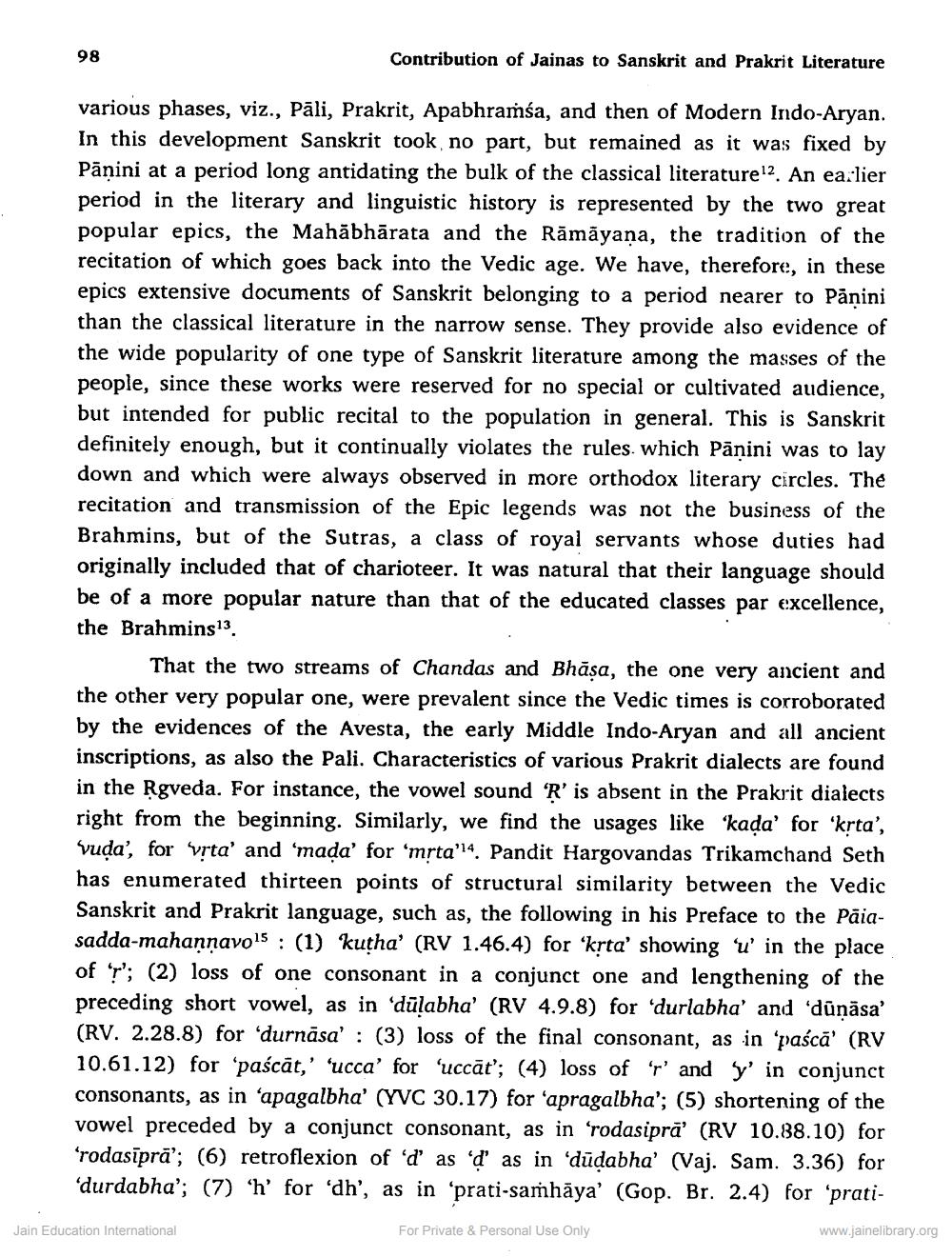________________
98
Contribution of Jainas to Sanskrit and Prakrit Literature
various phases, viz., Pāli, Prakrit, Apabhramśa, and then of Modern Indo-Aryan. In this development Sanskrit took no part, but remained as it was fixed by Pānini at a period long antidating the bulk of the classical literature!2. An earlier period in the literary and linguistic history is represented by the two great popular epics, the Mahābhārata and the Rāmāyana, the tradition of the recitation of which goes back into the Vedic age. We have, therefore, in these epics extensive documents of Sanskrit belonging to a period nearer to Panini than the classical literature in the narrow sense. They provide also evidence of the wide popularity of one type of Sanskrit literature among the masses of the people, since these works were reserved for no special or cultivated audience, but intended for public recital to the population in general. This is Sanskrit definitely enough, but it continually violates the rules which Panini was to lay down and which were always observed in more orthodox literary circles. The recitation and transmission of the Epic legends was not the business of the Brahmins, but of the Sutras, a class of royal servants whose duties had originally included that of charioteer. It was natural that their language should be of a more popular nature than that of the educated classes par excellence, the Brahmins13.
That the two streams of Chandas and Bhāsa, the one very ancient and the other very popular one, were prevalent since the Vedic times is corroborated by the evidences of the Avesta, the early Middle Indo-Aryan and all ancien inscriptions, as also the Pali. Characteristics of various Prakrit dialects are found in the Rgveda. For instance, the vowel sound 'R' is absent in the Prakrit dialects right from the beginning. Similarly, we find the usages like 'kada' for 'krta', vuda', for vrta' and 'mada' for 'mrta'!4. Pandit Hargovandas Trikamchand Seth has enumerated thirteen points of structural similarity between the Vedic Sanskrit and Prakrit language, such as, the following in his Preface to the Pāiasadda-mahannavo 15 : (1) kutha' (RV 1.46.4) for 'krta' showing 'u' in the place of 'r'; (2) loss of one consonant in a conjunct one and lengthening of the preceding short vowel, as in dūlabha' (RV 4.9.8) for 'durlabha' and 'dūņāsa' (RV. 2.28.8) for 'durnāsa' : (3) loss of the final consonant, as in ‘paścă' (RV 10.61.12) for ‘paścāt,' 'ucca' for 'uccāt'; (4) loss of 'p' and y' in conjunct consonants, as in ‘apagalbha' (YVC 30.17) for 'apragalbha'; (5) shortening of the vowel preceded by a conjunct consonant, as in ‘rodasiprā' (RV 10.88.10) for 'rodasīprā'; (6) retroflexion of 'd' as das in dūdabha' (Vaj. Sam. 3.36) for
durdabha'; (7) ‘h' for 'dh', as in “prati-samhāya’ (Gop. Br. 2.4) for 'pratiJain Education International For Private & Personal Use Only
www.jainelibrary.org




